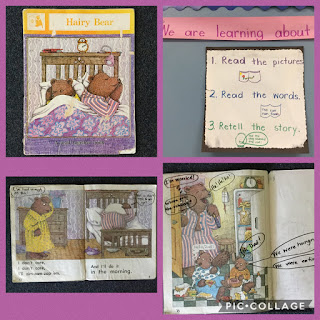Our classroom is fortunate to participate in a program called "Co-Teaching" with our PPS kindergarten grade level Special Educator Jennifer Santarcangelo. First of all, can I say how much your children LOVE to say her name... and the beauty of a multisyallabic name!
Jen has been a member of the CSD for most of her career and over the last few has focused mainly on the kindergarten grade level. As a special educator she works directly with students, consults with classroom teachers, observes student learning, and is a member of my classroom team.
Jen and I, along with the PPS speech pathologist meet weekly to discuss all kids for what we call a "Kids' Day" meeting. At times other specialized staff are invited to our Kids' Day meeting, such as the Behavior Specialist or the Occupational or Physical Therapist for CSD.
Whether students qualify for special education or not, Jen's expertise is focused on learning and troubleshooting when kids struggle. We work as a team to create individual supports for all kids. If a child needs support beyond what is happening in the classroom, we discuss that at Kids' Day and she takes that information to the next level of support teams that meet at another time (and while I am teaching!). This is how amazing PPS staff are in knowing your children and zeroing in on their needs.
Beyond all of this is CO-TEACHING for mathematics. Jen co-teaches in two kindergarten classes, mine and Miss Donnelly's. Thus, our two classrooms function as a learning pod, getting together over the course of the year for special math and literacy learning.
Each day Jen joins one classroom for math... so every other day she co-teaches math with me! As a team, Miss Donnelly, Jen, and I plan out lessons together for the week ahead. We plan for the WALT or "big ideas" our lessons will target. We then look at the needs of all students, differentiating lessons for both classrooms and individual learning styles. After co-teaching lessons we review what we did and discuss ways to increase student learning.
When Jen teaches in our room, she and I work directly with a small group of students (groups rotate). In this way your children are being taught by two highly trained teachers in an intensive small group format. For now we are working mainly with two groups of ten children; soon that will change as we make three learning groups, increasing the student to teacher ratio for instruction. It is am amazing process that highly impacts your children's learning process.
When Jen teaches in our room, she and I work directly with a small group of students (groups rotate). In this way your children are being taught by two highly trained teachers in an intensive small group format. For now we are working mainly with two groups of ten children; soon that will change as we make three learning groups, increasing the student to teacher ratio for instruction. It is am amazing process that highly impacts your children's learning process.
Counting, identifying numerals, matching quantity and presenting their own work in front of the class!














